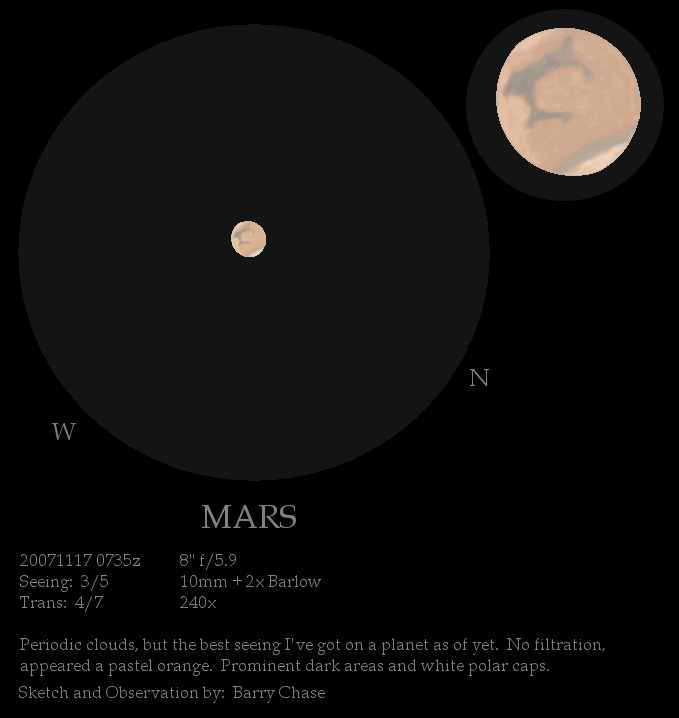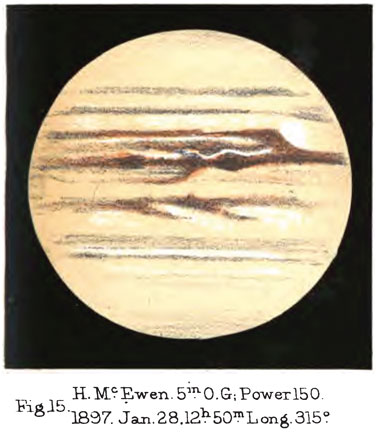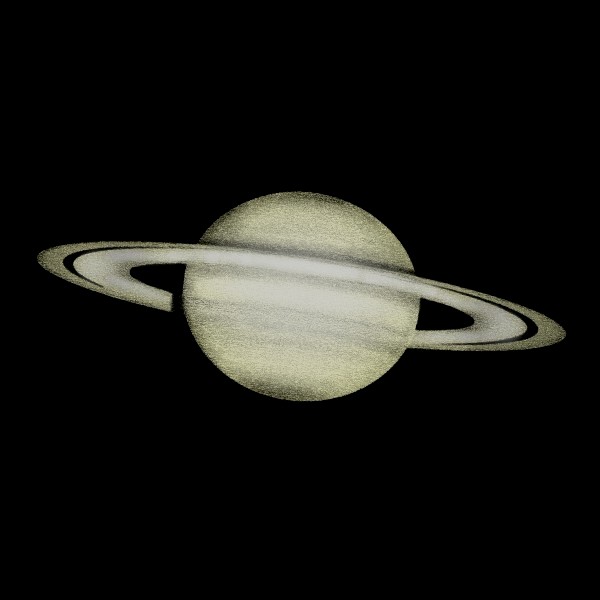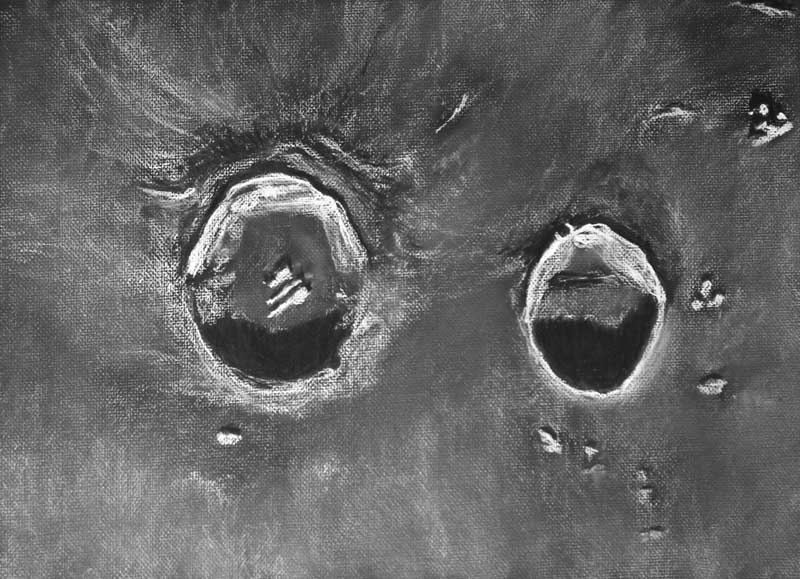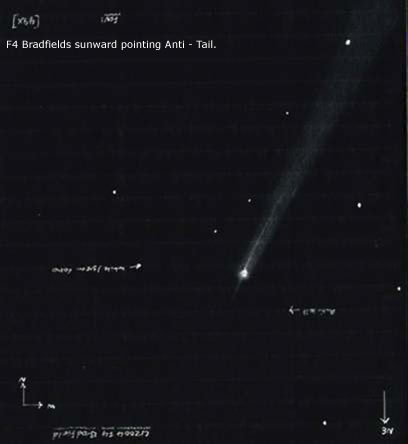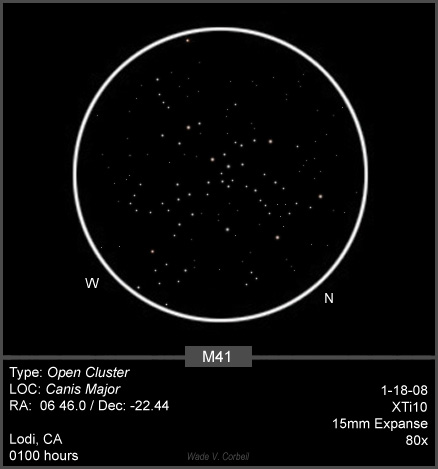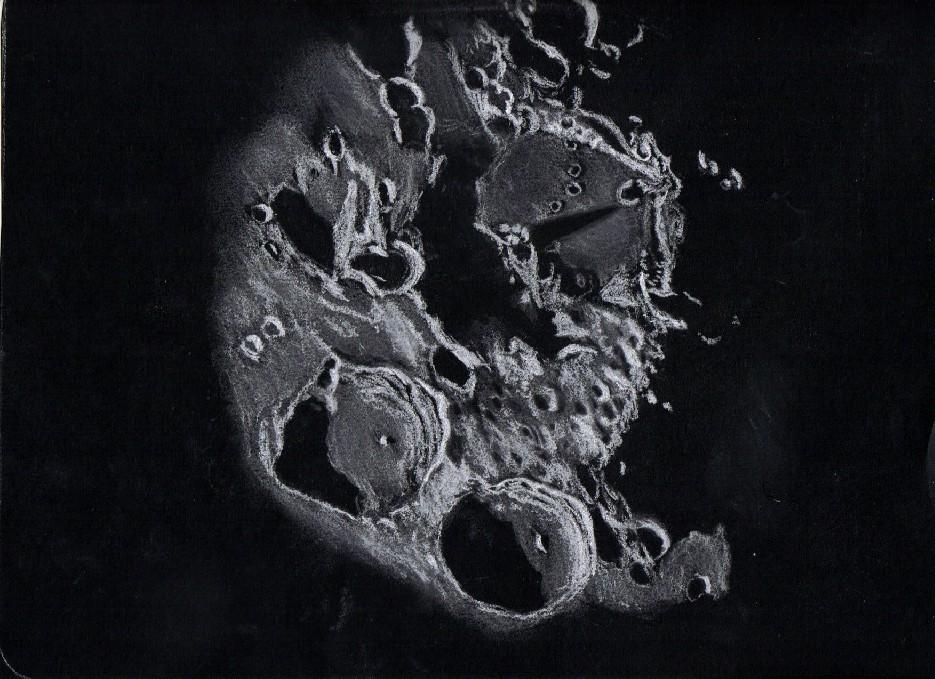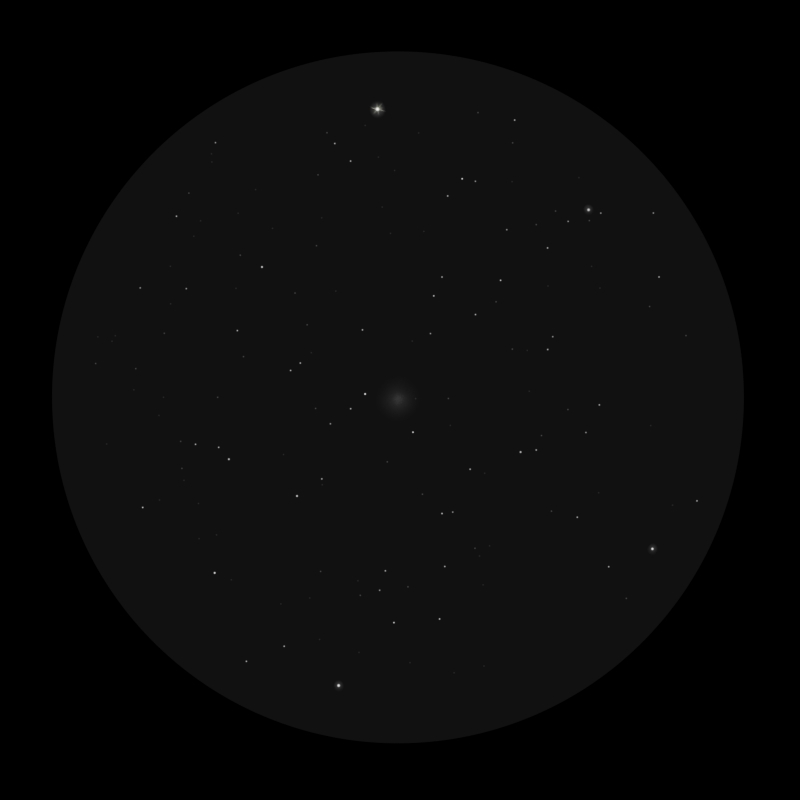
M13
Sketch and Details by Rony De Laet
The Great Globular in Hercules.
One of the finest globular clusters for northern hemisphere observers is undoubtedly M13 in Hercules. With a magnitude of 5.8, the cluster is a naked eye object under mag 6 skies. The cluster is also an easy to find object, even for novice observers. Just draw a line from Eta Herculis to Zeta Herculis and you’ll bump into M13. Just put Eta at the northern edge of the field of view, and M13 will appear centered in your view. Under dark skies, the Globular can be seen without optical aid as a tiny smudge of light.
While many globulars have a star like core, M13 appeared to me with a granular core. Its halo is very large compared to other globulars. I could detect a mag 10 star at the western border of the halo. The bright star at the top of the sketch is Eta Herculis.
With M13 riding high in the sky, try to compare it with other globulars like M3, M5, M10 and M12. At first, these globulars may all look alike. But with patience, each globular will show slightly different features!
Site : Bischofshofen, Austria
Date : May 3, 2008
Time : around 22.30UT
Binoculars : Bresser 8×56
FOV: 5.9°
Filter : none
Mount : Trico Machine Sky Window
Seeing : 3/5
Transp. : 4/5
Nelm : 6.0
Sketch Orientation : N up, W right.
Digital sketch made with Photo Paint, based on a raw pencil sketch.

